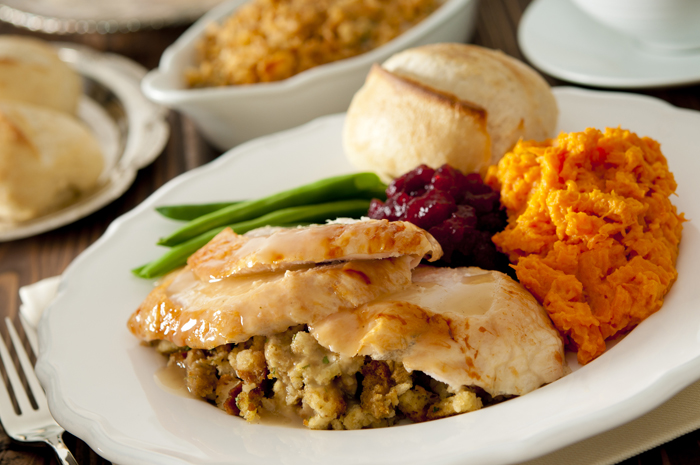
As you’re preparing Thanksgiving dinner for family and friends this year, remember the food safety basics: clean, separate, cook and chill. Don’t risk making any loved ones sick with a foodborne illness!
Clean: Wash your hands with warm water and soap for 20 seconds throughout the cooking process, especially before handling food and after handling raw meat and poultry. This is one of the simplest and most effective ways to prevent the spread of bacteria.
Wash cutting boards, dishes, utensils, and countertops with hot, soapy water after preparing each food item and before you go on to the next item.
Wash vegetables and fruits, but not the turkey. Washing raw meat and poultry can actually help bacteria spread because their juices (and any bacteria those juices might contain) could splash onto your sink and countertops.
Separate: Always separate raw turkey from ready-to-eat foods. By using separate cutting boards, plates, and utensils when preparing and serving food, you can also help you to avoid cross-contamination.
Cook: Cooked food is safe only after it’s been cooked to a high enough temperature to kill harmful bacteria. Use a meat thermometer on the turkey to make sure it reaches a minimum internal temperature of 165 degrees F.
Place the thermometer in three different spots to determine the temperature of the turkey: the innermost part of the thigh, the innermost part of the wing, and the thickest part of the breast.
Chill: Refrigerate any leftovers within two hours to slow the growth of bacteria. Store your leftovers in shallow containers and cut turkey into smaller pieces to decrease cooling time.
Leftovers in the fridge are safe to eat for three or four days (that’s Monday!) and can be frozen during that time for longer storage.
 If you have other Thanksgiving food safety questions, you can call USDA’s Meat and Poultry Hotline at 1-888-MPHotline (1-888-674-6854) from 10 a.m. to 4 p.m. ET on weekdays and from 8 a.m. to 2 p.m. ET on Thanksgiving Day.
If you have other Thanksgiving food safety questions, you can call USDA’s Meat and Poultry Hotline at 1-888-MPHotline (1-888-674-6854) from 10 a.m. to 4 p.m. ET on weekdays and from 8 a.m. to 2 p.m. ET on Thanksgiving Day.
(To sign up for a free subscription to Food Safety News, click here.)
© Food Safety News